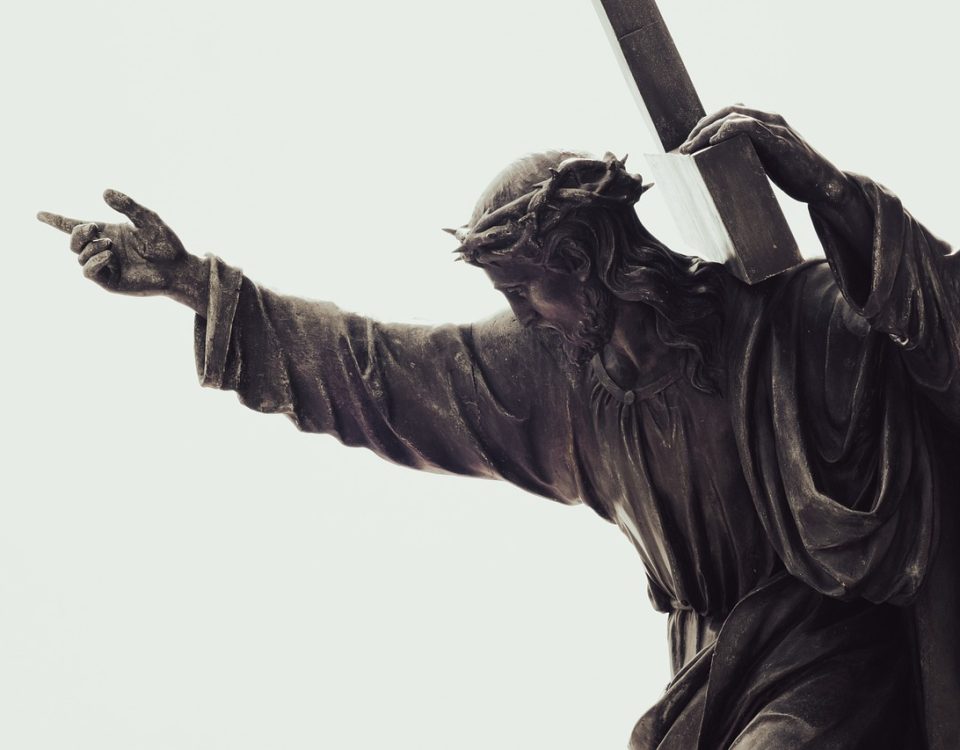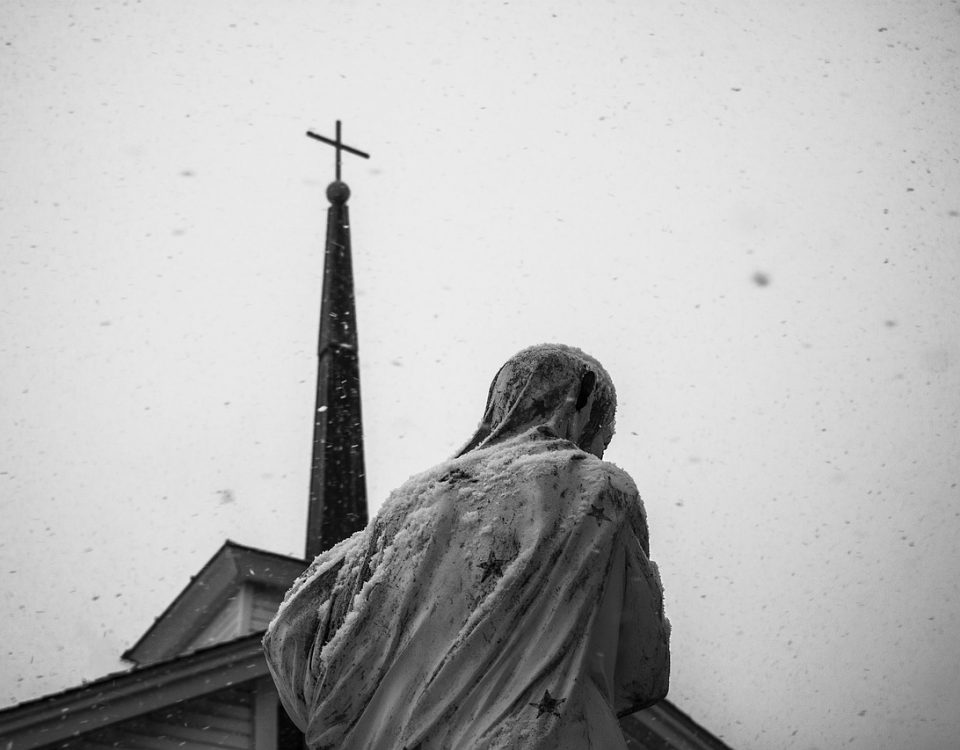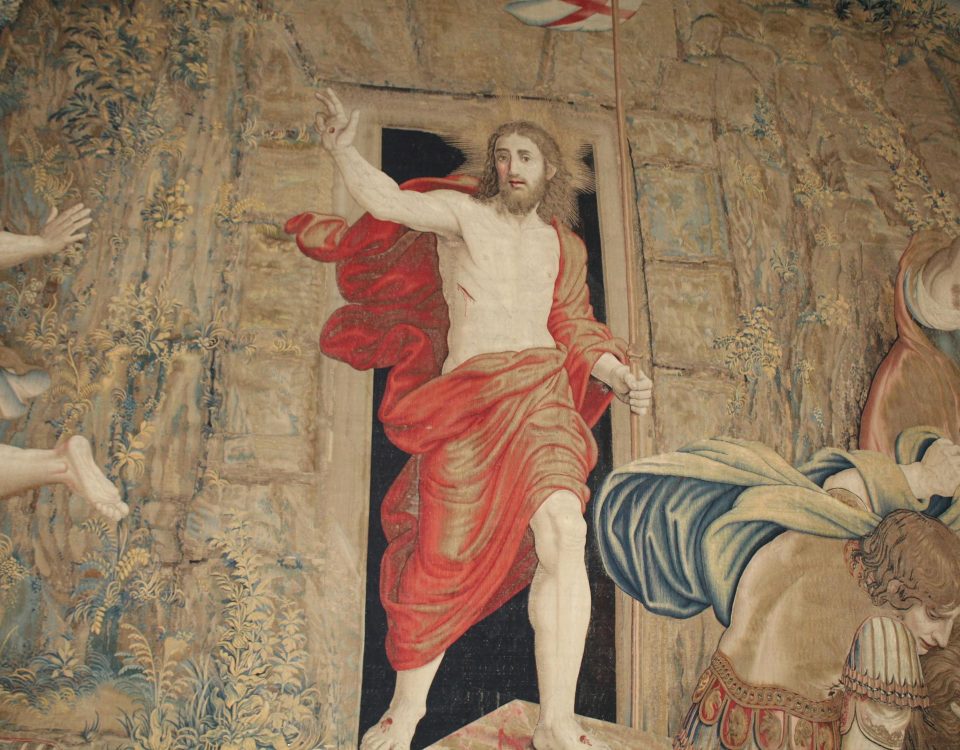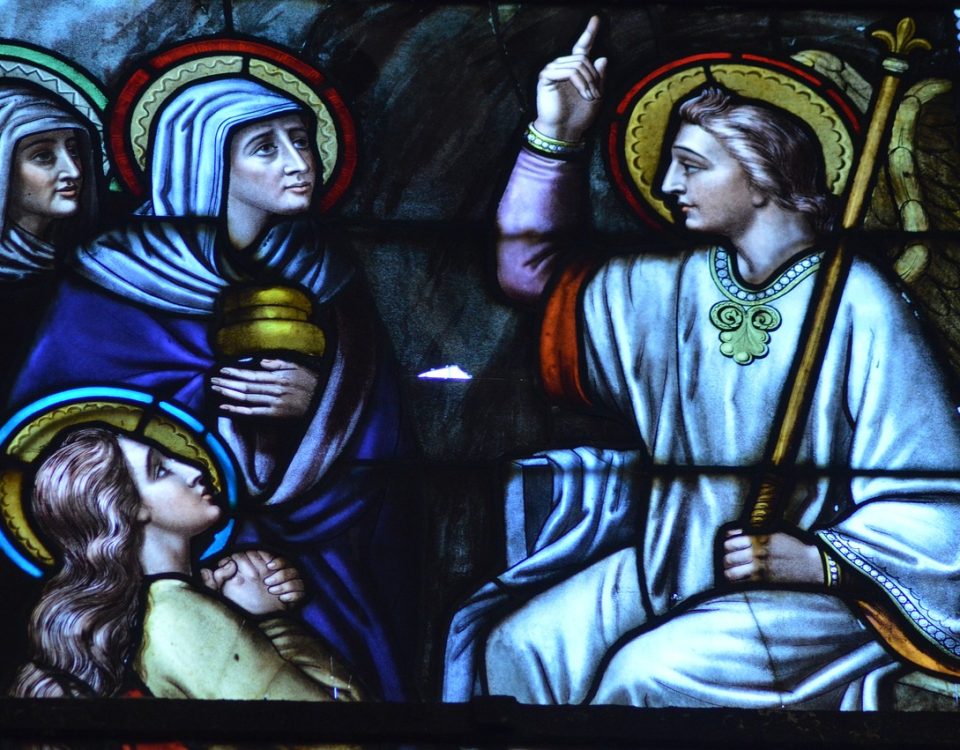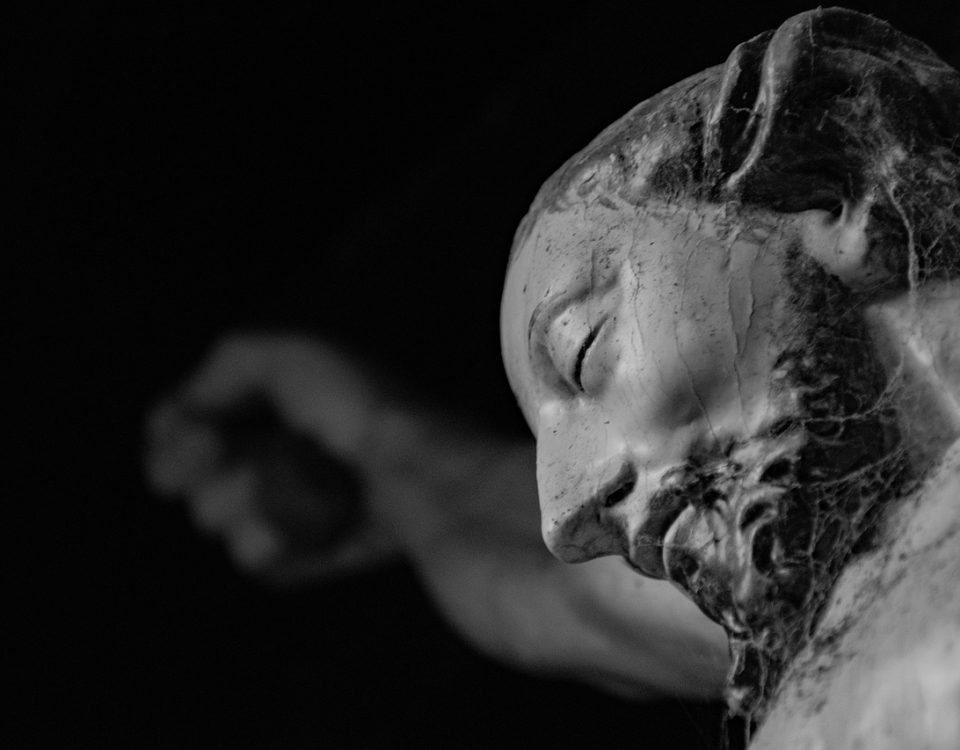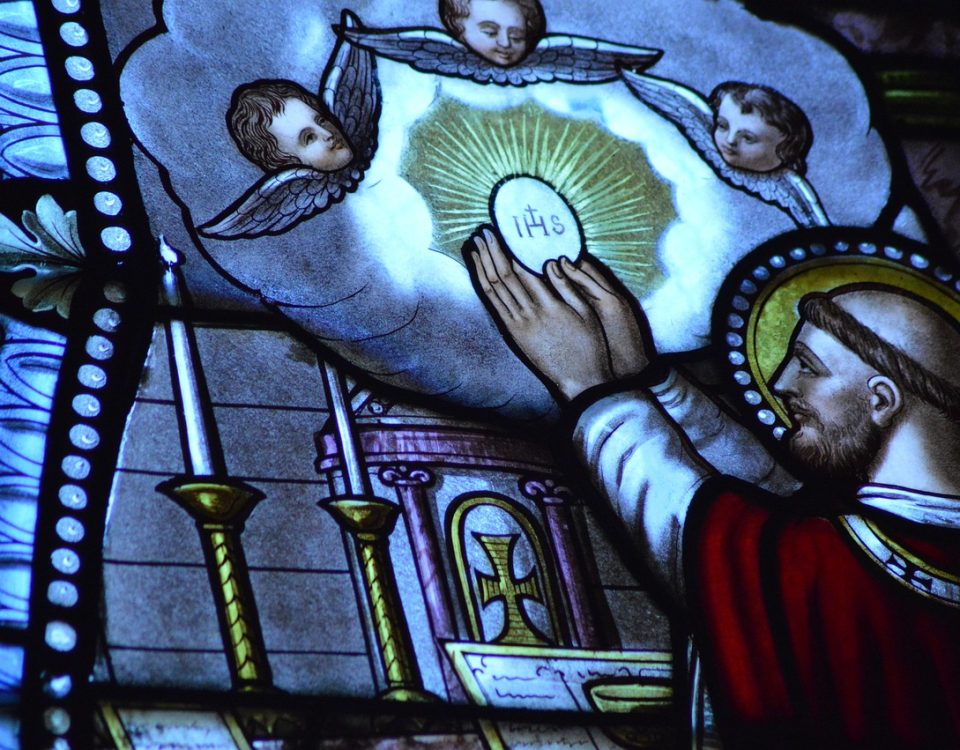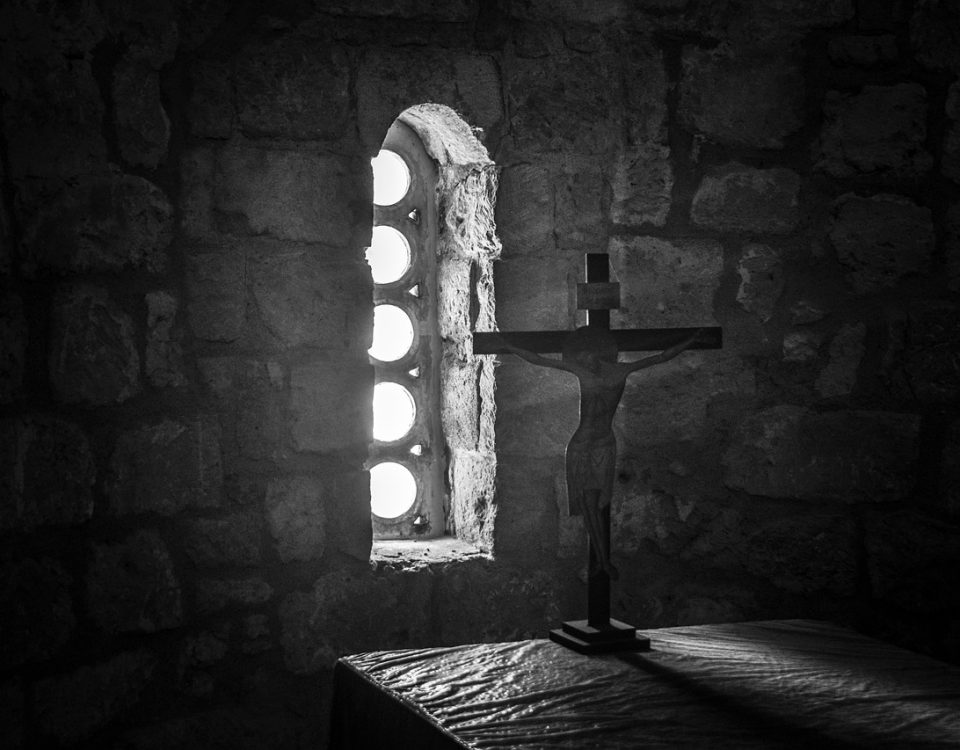Subiaco, Italy, 2015
It was the philosopher Alasdair MacIntyre who said, “We are waiting not for a Godot, but for another—doubtless very different—St. Benedict.” We exist, rather unknowingly, he said, in a new dark age, and so he invoked a figure from the past, this saint whose beginning we’ve come to see.
He invoked St. Benedict because, as he said, “What matters at this stage is the construction of local forms of community within which civility and the intellectual and moral life can be sustained.”[1] Benedict, he argued, did just that at the beginning of the last so-called “Dark Ages,” at the end of late antiquity, at the dark birth of medieval Europe. From this cave came civilization as we know it, both the consecrated remains of the classical world as well as true faith in the true God—Hebrew, incarnate, and triune.
St. John Henry Newman likened Benedict to Abraham. Often called the “Patriarch of the West,” it’s “a title,” Newman said, “which there are many reasons for ascribing him.”[2] Citing a historian from the turn of the eighteenth century—of religious orders—Newman wrote that “this illustrious Order are accustomed to claim for it in all its branches as many as 37,000 houses, and, besides, 30 Popes, 200 Cardinals, 4 Emperors, 46 Kings, 51 Queens, 1,406 Princes, 1,600 Archbishops, 600 Bishops, 2,400 Nobles, and 15,000 Abbots and learned men.”[3] Undoubtedly impressive, even if a bit exaggerated; nonetheless, we stand here in a place from which began not only a cultural movement of immense scale, but also a project in the virtues which continues, in part, to underwrite even our own morally fragmented age. It’s a project which influenced not only the Church but the entire world (The Pastoral Rule of St. Gregory the Great, for example—a very influential text in its own right—was meant to be something of an episcopal and parochial adaptation of Benedict’s Rule, but it also served as a text of Carolingian political theory).[4] But it is also—first, actually—a spiritual project, a project of desire and of faith. And it all began with a young, disillusioned dropout, a man about which we know very little beyond legend (all we really know of him comes from the Dialogues of Saint Gregory the Great, much of which is faithfully embellished) but whom nonetheless Gregory the Great simply called vir Dei, “the man of God.”[5] A title only a few—and those few foolish—have not thought appropriate.
(On a personal note, I have always felt spiritually close to Benedict. I named my son after him. As a former Anglican, trained for the ministry in an Anglican monastery in England ordered by the Rule, I have been shaped deeply by the Benedictine tradition. The ancient chronicler, Orderic Vitalis—himself a Benedictine—called England “the land of the Benedictines.” Benedict marks deeply anything you would call English spirituality, and it marks me deeply as well.[6])
St. Benedict was born in the late fifth century (sometime around 480 or 490) in Nursia (now Norcia), northeast of Rome. As a student in Rome, he became disillusioned by the immorality of the city and resolved to become a monk. He dropped out of school, as I said, choosing to become “knowingly ignorant and wisely illiterate,” as Gregory called him. He was not entirely a hermit yet as he brought his governess with him into exile, to a church dedicated to Saint Peter in a little town east of Rome (Effide/Affile). There, the legend goes, Benedict miraculously repaired a sieve his nanny had broken, and the fame surrounding that miracle made it necessary that he both leave his governess as well as find a more remote “desert” for prayer. Which brought him here, to Sublacus (as it was known then, referring the artificial lakes Nero had built nearby). Here he hid for three years in a cave, Sacro Speco, mentored it seems by a monk named Romanus.
Three years he lived the in this cave until some monks from a nearby monastery prevailed upon him to come be their spiritual father. He obliged them, and it was a disaster. The reforms he attempted were obviously too difficult for the monks who apparently very quickly experienced buyer’s remorse about asking Benedict to come among them. So they did the only sensible thing to do with religious leaders in the sixth century—they tried to poison him. But of course that wasn’t going to work against Benedict, too miraculous and holy by this point in his life. As the story goes, the moment the poisoned carafe was held up for the abbot’s blessing (as was custom), Benedict simply offered his blessing, making the sign of the cross over it, which in turn immediately shattered the sinister vessel to pieces. Benedict left at that moment, saying simply to these recalcitrant monks that they should find some other spiritual father more suitable to them[7]—Gregory, I think, echoes the wisdom of this legendary story in the very first chapter of his Pastoral Rule when he writes that the “unfitness of the pastor does, in truth, often accord with the deserts of their subjects.”[8] Benedict himself in his Rule wrote a lot about the qualities of an abbot, obviously having gained his wisdom the hard way. “God forbid,” he wrote, “that a whole community should conspire to elect a man who goes along with its own evil ways.” The abbot, he said, should remember mercy more often than judgement and should “strive to be loved rather than feared.”[9]
After this debacle, Benedict returned to solitude, but that solitude didn’t last. Disciples gathered around him, and eventually he established twelve monasteries here in the valley, each community comprised of twelve monks.[10] This is a period clouded in miracles and spiritual testimony—all of which, out of respect for this place, we should wholeheartedly believe. After this, harassed by a local priest, Benedict moved on finally to Monte Cassino, establishing there one of the greatest monasteries in the history of the world, a community that exists still today.
Now I will leave the rest of the legend to you, to discover on your own. I need to move on to talk very briefly about the Rule of Saint Benedict which is, quite simply, “the most influential document in all of western monasticism.” But of course Benedict didn’t invent monasticism, the Egyptians did in fourth century—Antony the hermit, but more especially Pachomius in Upper Egypt. He is the father of coenobitical life (coenobitical, coming from κοινός βίος), discovering that it was only in community that one could learn the virtues. How can one learn patience, for example, unless there was an annoying brother nearby to demand it or a holy one to model it? St. Jerome would translate the Rule of Pachomius for his own religious communities in Palestine.
But there were other monastic projects too. Ambrose and Caesarius of Arles would write rules for consecrated virgins; Paulinus of Nola and his wife Therasia lived together continently, after the death of their young child, with friends among the poor in a sort of fraternitas monastica. Martin of Tours, a converted soldier, founded numerous monasteries under the influence of Hilary of Potiers. The Rule of Saint Augustine (a compilation of texts really) is perhaps next in glory to Benedict’s Rule and would be enormously influential throughout the middle ages. And, of course, Basil the Great’s long and short rules influenced both the East and the West. Cassian, in his Institutes and Conferences, brought the wisdom of Egypt (Evagrius especially) to the West (Benedict mentions both Basil and Cassian at the end of his Rule). And then finally, bearing most immediate influence, there is the long and eclectic and anonymous Rule of the Master, a sixth century text, much of which Benedict simply inserted into his own Rule.[11] All of this (and more) is the spiritually creative environment in which Benedict wrote his—as he called it—“little rule…for beginners.”[12] It is the fairest flower of all this fertilization, and it remains even today the rule and way of life for countless men and women, both religious and otherwise.
Now what makes Benedict’s Rule stand out is that it is a “balanced and humane rule which it was possible for anyone to follow.”[13] Considerably shorter than the Rule of the Master, it is a classic for its clarity, charity, and concision—not to mention its sheer spiritual depth and brilliance. Establishing in its first seven chapters the foundation of monastic life—the “tools for good works,” obedience, silence, humility—the Rule then deals for many chapters with the structure and even the minutiae of liturgical prayer, called simply the “Work of God,” above which the monk should prefer nothing.[14] The Rule calls for eight offices in the day, a program that has been subject to reform over the centuries, most recently at the Second Vatican Council (reform movements among the Benedictines are always in some sense liturgical reforms).[15] Benedict taught that liturgical prayer was the most intense experience of the presence of God possible to human beings. “We believe that the divine presence is everywhere,” he wrote, but it is “especially true when we celebrate the divine office.” When the monks are at the Work of God, they are to recall more intensely that they are in the presence of God and the angels and that by their singing the divine psalms in unity—the mind in harmony with the heart, each brother in harmony with the other—they experience something of the heaven for which they long and the grace which governs all things.[16] This is why so much of the Rule is given over to liturgical questions—it’s indicative of the bedrock of faith and desire sitting at the bottom of it all. It is because, at the end of the day, monastic life is simply about seeking God, trusting that everything leads the monk to God—both prayer and hardship.[17]
The remainder of the Rule treats elements of common monastic life—sleeping arrangements, the excommunication of stubborn and irreformable monks, food and drink, clothing, gifts, the qualifications of the monastery cellarer (he must be wise), what to do if a brother is repeatedly late to dinner (he should eat alone and without any wine), the reception of guests (they are to be “welcomed as Christ”), and so on. It concludes, as at the beginning (and these are cherished and genuinely original chapters), with instruction about leadership in the monastery—the qualities necessary in the porter, the prior, and the abbot.[18] Here at the end, Benedict’s understanding of charity as a mystery of mutuality, manifest in empathy and obedience, shines with a sort of simple clarity. Forsaking the “wicked zeal of bitterness which separates from God and leads to hell,” the monks—Benedict taught—are to embrace the “good zeal which separates from evil and leads to God and everlasting life.” And this zeal is fostered with “fervent love,” the “pure love of brothers,” he said. As with the liturgical Work of God, above which the monk is to prefer nothing, so too here at the end of the Rule (talking about this pure fraternal love), Benedict teaches that the monks are to “prefer nothing whatever to Christ.”[19] The parallel is deliberate—the reality and ethics of heaven found in worship are to be also the reality and ethics of the monastery. Here we are very close to the heart of Benedictine wisdom. Here we begin to see that the Rule is not some odd antique collection of even more ancient monastic eccentricities, but that it is indeed a project in the virtues as well as a spiritual project—one that in a very significant way built the world we still enjoy, however dark the horizon may seem.
It is, as I said, a project of desire and faith (Newman called it simply the “Mission of St. Benedict”). It’s summed up, really very simply, in a question Benedict puts at the very end of his Rule—it names rather concisely what Saint Benedict and his brothers have always been about. “Are you hastening toward your heavenly home?” Benedict asks.[20] That’s the question behind all of this, the question within the soul of every monk and the question that was once alive in the soul of our civilization. “Are you hastening toward your heavenly home?” And so, the question now which we must ask this—as Charles Taylor calls it—“secular age,” is this: What is the desire of this age? To what do we hasten? Benedict in his day asked if it wasn’t heaven. If this isn’t our question any more—as individuals and as people living together—what is? We have seen what Benedict has built (he built us). What will be built after Benedict? And who will build it? This is why we wait, as MacIntyre said, for another Benedict, doubtless very different. Wherever he or she may be.
[1] Alasdair MacIntyre, After Virtue, 263
[2] John Henry Newman, “The Mission of St. Benedict,” Benedictine Essays, 370
[3] Ibid., 372
[4] Henry Davis, “Introduction,” Pastoral Care, 10-11
[5] Columba Stewart, Prayer and Community: The Benedictine Tradition, 21
[6] Martin Thornton, English Spirituality, 76-83, 257
[7] Gregory the Great, Dialogues 2.2
[8] Gregory the Great, The Pastoral Rule 1.1
[9] Benedict, The Rule 64
[10] Dialogues 2.3
[11] Jordan Aumann, Christian Spirituality in the Catholic Tradition, 57-72
[12] The Rule 73
[13] George Guiver, Company of Voices, 57
[14] The Rule 43
[15] Ibid. 16
[16] Ibid. 19
[17] Ibid. 58
[18] Ibid. 22, 23-26, 39-40, 55, 54, 31, 53, 64-66
[19] Ibid. 72
[20] Ibid. 73




